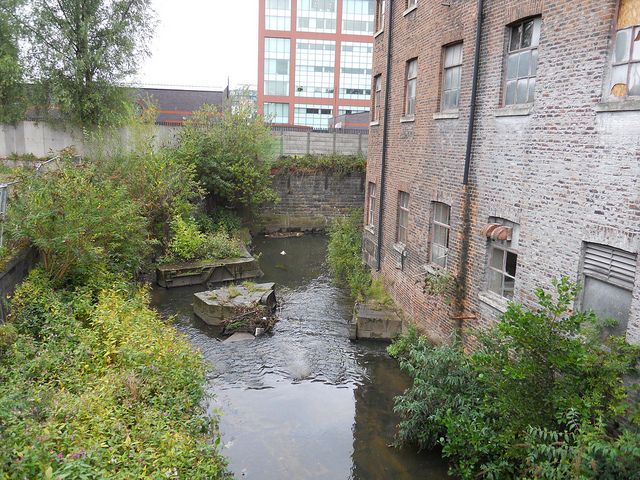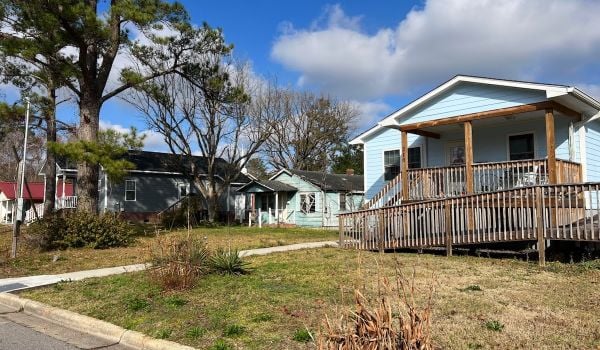When cities of the industrial age were being built, their planners often saw rivers as a problem or nuisance. If a waterway couldn’t serve as a conduit for commerce or source of power, it was often pushed underground, blocked up, covered over and forgotten.
These days, though, cities are increasingly reclaiming their rivers. Across the world, engineers and planners are coming to view these long-abused channels as not only places to play and experience nature, but also as vital parts of a water management system, helping to cope with flood risk in a cost-efficient, environmentally safe way.
In the United Kingdom, the Environment Council has taken up the task of restoring 9,500 miles of rivers. One signature effort, the Guardian reports, will be the River Medlock in Manchester, which was channeled and contained within a brick culvert 100 years ago after it flooded and washed bodies out of a graveyard in the 1860s.
Today, of course, thinking about flood management has changed radically. The environmental experts who hope to free the Medlock from its brick straitjacket anticipate that letting the river run its natural course will help mitigate the effects of future deluges.
Unchaining the river will also have an incalculable effect on the landscape of the park it runs through, not to mention the quality of life for those who could walk its shores for the first time in generations. From the Guardian:
Once the bricks are removed and concrete foundations dug up, the river will no longer be confined to a narrow channel. It will become wider and shallower and will start to meander along its own course. Weirs will be ripped up, with the result that the flow of water will slow down. Fish will be able to swim up the Medlock again and plants should start to grow on the riverbed.
Workers have already spotted brown trout and kingfishers. “We are breathing life back into dead rivers,” said Oliver Southgate, of the Environment Agency.
The Medlock initiative is one of countless efforts taking place across Europe and the world. The European Union’s Water Framework Directive, for instance, calls for the restoration of hundreds of waterways on the continent by 2027.
In the U.S., the process of “daylighting” rivers, as it’s called, happens on a case-by-case basis. One notable example is the Saw Mill River in Yonkers, N.Y. The river that was once buried and forced through giant culverts now flows through a four-acre park at the heart of the city, providing a central amenity for a place still trying to reinvent itself after generations of urban decay and racial strife. The pipes that once confined the Saw Mill remain available to divert overflow during heavy rainstorms, offering additional flood protection.
On the other side of the country, most of the 51-mile Los Angeles River has been trapped in a concrete half-pipe since the 1930s. It wasn’t even until 2008 that the Army Corps of Engineers officially considered this polluted waterway, which came to symbolize the extremes of Southern California sprawl, a true river. But as Nate Berg writes in a March Forefront story, a master plan approved in 2007 will aim to transform “the river’s 32 miles running through L.A. into places for recreation, natural life, water quality improvements and, crucially, flood control.”
The movement to reclaim rivers, and by so doing heal the cities that once scorned them, is everywhere. A new documentary called Lost Rivers follows the work of advocates who seek out hidden rivers that flow beneath pretty much every city in the world. Their work — and the work of everyone who daylights rivers around the globe — has never been more urgent, as flooding risk grows due to increasingly severe weather and runoff from the paved surfaces that result from sprawl.
A big part of the solution to these problems, the filmmakers suggest, is right under our feet.
Lost Rivers – OFFICIAL TRAILER from Catbird Productions on Vimeo.
Watermark is made possible with the support of the Surdna Foundation.

Sarah Goodyear has written about cities for a variety of publications, including CityLab, Grist and Streetsblog. She lives in Brooklyn.






_920_518_600_350_80_s_c1.jpg)










